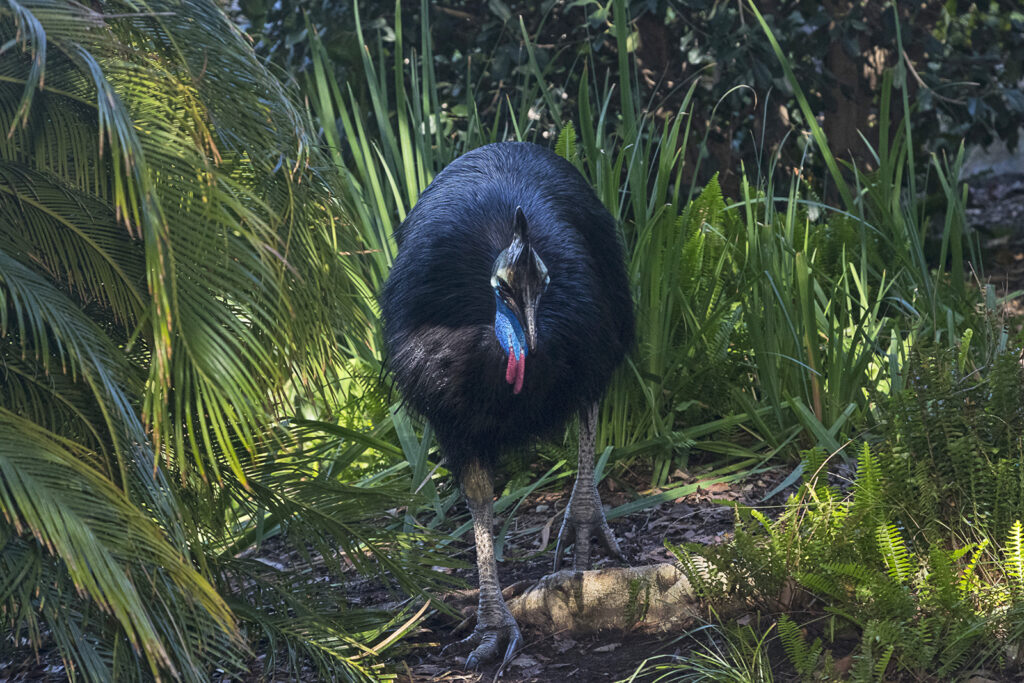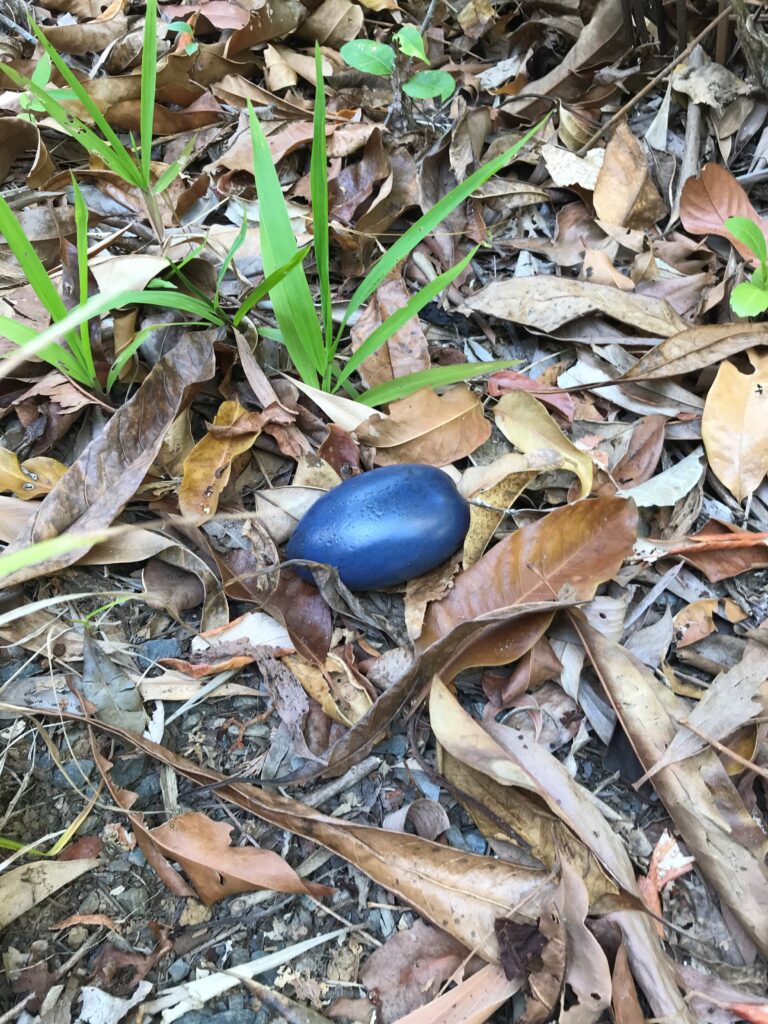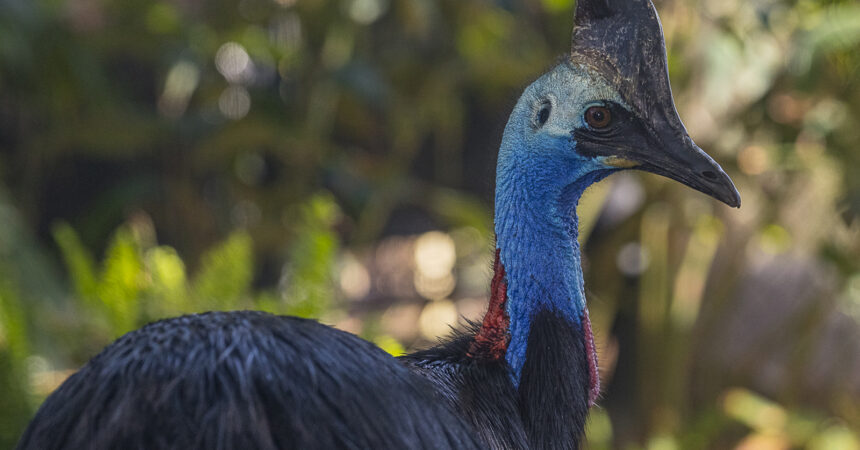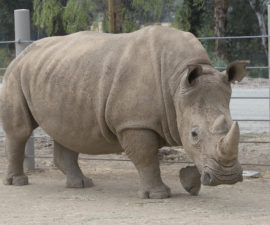September 25 is World Cassowary Day, so we’re sharing insight from our animal care specialists that care for these amazing birds.
Cassowaries, such as the southern cassowaries at the Safari Park, are famous for their striking appearance. From their helmet-like casque to their powerful claws, these birds evoke a prehistoric time. People are so often captivated by the sight of the cassowary, but they rarely discover how critical these birds are to the rain forests that they call home in Indonesia, Papua New Guinea, and Australia. Cassowaries are not simply inhabitants of these forests, but crucial gardeners that keep the forests diverse and healthy.
Cassowaries are considered a “keystone” species in their rain forest habitat. Ecologists sometimes identify certain species as “keystones” because they provide essential support to many other species in their ecosystem. The loss of one keystone species would cause many other species to disappear, devastating the ecosystem, just as the removal of a keystone from a bridge causes the bridge to collapse.

Why are cassowaries so important to their rain forest home? First, imagine a rain forest tree, who wants to spread its seeds far and wide, in hopes that some of those seeds find a good spot to grow into a mature plant. The tree cannot move further than it can grow. Some trees can make use of wind and gravity to distribute seeds, but this is limited. What would really help a tree would be a gardener that the tree can recruit to take care of the seed and plant it in a nice spot. That is what trees find in the cassowary, a gardener who will happily disperse seeds, in exchange for a little bit of fruit.
A fruit has two important parts—the flesh and the seed. The flesh is a tasty, easy to digest food that the plant offers the cassowary in exchange for dispersing the seed. The flesh is the reward the plant offers the cassowary in exchange for its gardening service. The cassowary swallows the fruit whole, digests the flesh, and deposits the seed in a nice pile of fertilizer somewhere else. Only large animals, a cassowary can swallow massive fruits like the cassowary plum.

Cassowaries are so good at seed dispersal that some plants almost completely rely on them. The cassowary plum produces a poisonous sap that repels non-cassowaries. The seeds of one rain forest tree, Ryparosa kurrangii, germinate (or sprout) only 4 percent of the time when planted without the help of a cassowary. When the same seeds are eaten and passed by a cassowary, they germinate 92 percent of the time! The seeds seem to be activated by the process of moving through the cassowary’s digestive system. Without the help of cassowaries, these trees would start to vanish.
Because cassowaries have long lifespans and live in stable territories, a cassowary shapes its own habitat, planting the seeds of the fruits that it feeds on. The seeds planted by a cassowary one year will bear fruit that feed the bird in future years. Future generations of cassowaries are subsequently fed by the trees planted by their ancestors. Just by eating, the cassowary contributes to the future of not just cassowaries, but fruiting plants and the other animals that rely on those plants.
Since they feed on over 200 species of fruits, cassowaries maintain a diverse rain forest. Without cassowaries, these habitats would change dramatically. First a few fruiting plants would become scarce, which would in turn cause food shortages for other fruit eating animals. This would make it even harder for plants to disperse seeds – a vicious cycle. As time goes on, more and more species disappear as the forest loses the ability to support them. This is why cassowary conservation is so crucial. Protecting the cassowary protects the entire rain forest. Next time you look at the southern cassowaries at the Safari Park, consider not only their strange and dinosaur-like appearance. Consider how this peculiar, massive bird is the perfect gardener and manager of some of the world’s oldest and richest rain forests.
Nicolaas Webb is a senior avian care specialist at the San Diego Zoo Safari Park.





